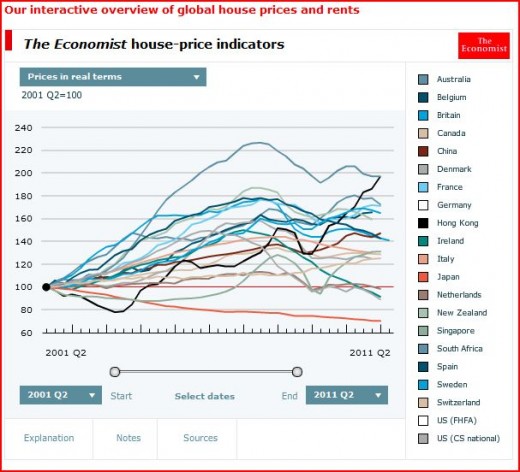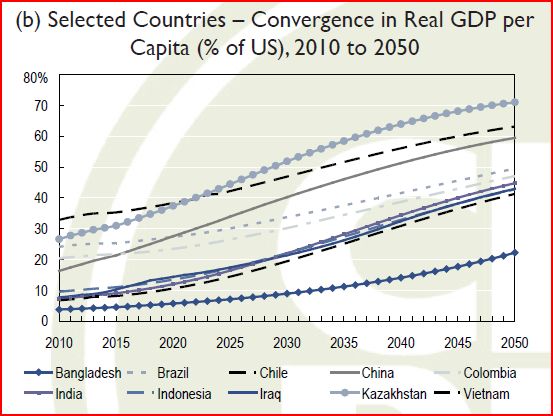The vacuum on the right
A year ago I did a post called “Two untimely deaths.” Here’s an excerpt:
Milton Friedman died on November 16, 2006, one year before the sub-prime crisis. I’d like to suggest that his death was the closest equivalent to the death of Strong in 1928. In 1998 Friedman pointed out that the ultra low interest rates were a sign that Japanese monetary policy was very contractionary, at a time when most people characterized the policy as highly expansionary.
There is little doubt that Friedman would have recognized the low interest rates of late 2008 were a sign of economic weakness, not easy money. But what about the big increase in the monetary base? First of all, the base also rose by a lot in Japan, and in the US during the Great Contraction. Second, Friedman would have clearly understood the importance of the interest on reserves policy, which was very similar in impact to the Fed’s decision to double reserve requirements in 1936-37. And in his later years he became more open to non-traditional policy approaches, for instance he endorsed Hetzel’s 1989 proposal to target inflation expectations via the TIPS spreads. Note that the TIPS markets showed inflation expectations actually turning negative in late 2008.
Why was Friedman so important? I see him as having played the same role among right-wing economists that Ronald Reagan did among conservatives. Reagan was really the only conservative that all sides respected; social conservatives, economic conservatives, and foreign policy (or neo-) conservatives. After he left the scene, the conservative movement cracked-up.
Friedman was respected by libertarians, monetarists, new classicals, etc. Last year I criticized Anna Schwartzfor adopting the sort of neo-Austrian view that she and Friedman had strongly criticized in their Monetary History. If Friedman was still alive, and strongly insisting that money was actually far too tight, then I doubt very much that Schwartz would have gone off in another direction. It would be like Brad DeLongdisagreeing with Paul Krugman on macroeconomic policy. Once in a blue moon.
Today there is no real leadership among right wing economists.
[BTW, I kind of regret the shot at DeLong—I’m increasingly impressed by his brilliance, despite the fact that we often disagree.]
Now this issue is resurfacing. Here’s Will Wilkinson:
TIM LEE asks an important question: why are conservatives and libertarians so uniformly hawkish about inflation? Mr Lee (a friend and former colleague) notes that this regularity is far from inevitable. Milton Friedman, a revered figure in right-of-centre circles, famously pinned the severity of the Great Depression on contractionary monetary policy. Scott Sumner, a professor of economics at Bentley University who identifies himself as a “neo-monetarist”, has argued that Friedman would have supported monetary stimulus. And he has argued, on neo-Friedmanite grounds, that tight monetary policy both precipitated and exacerbated our recent recession. I happen to think Mr Sumner is correct, but his expansionary prescription remains anathema on the right. Why?
. . .
Milton Friedman was one of the 20th century’s great economists as well as one its most formidable debaters. This made him a powerful check on the influence of anarcho-capitalist Austrians, obviously much to the chagrin of Rothbard. “As in many other spheres,” Rothbard wrote, “[Friedman] has functioned not as an opponent of statism and advocate of the free market, but as a technician advising the State on how to be more efficient in going about its evil work.” Rothbard’s fulminations notwithstanding, Mr Friedman died a beloved figure of the free-market right. Yet it does seem that his influence on the subject of his greatest technical competence, monetary theory, immediately and significantly waned after his death. This suggests to me that Friedman’s monetary views were more tolerated than embraced by the free-market rank and file, and that his departure from the scene gave the longstanding suspicion that central banking is an essentially illegitimate criminal enterprise freer rein.
I’d add a couple points here. During his period of greatest influence he was known as somewhat of an inflation hawk, as high inflation was the big problem and the old Keynesian model didn’t have good answers. The right was happy with that monetarist critique of Keynesianism. And second, the most important section of Friedman and Schwartz’s Monetary History of the United States was the chapter on the Depression, where they were highly critical of the Fed’s deflationary policies. Even inflation hawks don’t think rapid deflation is a good idea. But the subtext of their monetary history was even more important. The Great Depression had discredited capitalism in the eyes of most intellectuals. By showing that the problem was tight money, not laissez-faire policy, Friedman and Schwartz opened the door to the neoliberalrevolution. The New Keynesian technocrats who ran the world economy from 1983 to 2007 are much more comfortable with laissez-faire than their old Keynesian predecessors.
And here’s Tim Lee:
This has gotten me thinking about the broader connection between peoples’ views on monetary policy and their broader ideological worldviews. With the lonely exception of Scott Sumner, virtually every libertarian or conservative who has expressed a strong opinion about monetary policy has come down on the side of the inflation hawks. Over the last three years, a wide variety of fiscally conservative Republican politicians have attacked the Federal Reserve for its unduly expansionary monetary policy. I can’t think of a single Republican on the other side.
Yet it’s not obvious why this should be. There’s a coherent ideological argument for abandoning central banking altogether in favor of a gold standard or free banking. In a nutshell, the argument is that no single institution will have the knowledge necessary to “steer” monetary policy, and so we should prefer a monetary system that decentralizes control over the supply of money.
But whether you like it or not, we do have a central bank and it’s important that it function effectively. Logically, it seems like libertarians should be equally worried about both the threat of too much inflation and the threat of too little. After all, one of Milton Friedman’s most famous books argued that the Depression was worsened by the Federal Reserve’s unduly contractionary monetary policy. Yet (again, aside from Sumner) no free-market thinkers or politicians made this argument even in the depths of the 2009 contraction.
So why is right-of-center opinion so lopsided? I can think of two possible explanations. One is that we’re still having the monetary policy debates of the 1970s, when right-of-center thinkers, following Milton Friedman, argued that the era’s persistently high inflation was the fault of unduly expansionary monetary policy. They were right about this, and a whole generation of free-market intellectuals has been on guard against the threat of inflation ever since. And this is obviously reinforced by the reciprocal trend on the left: because most of the inflation doves are on the left, people who are in the habit of disagreeing with left-wingers are discouraged from adopting their arguments on this issue.
Those are good points, but I’ll add a few more:
1. I t makes me uncomfortable to level this charge (as there is nothing I hate more than others questioning my motives) but it’s a bit awkward when you have conservative bastions like the Wall Street Journal bashing the Fed’s tight money policies in 1984, when inflation was 4% (and Reagan was in office) and making the opposite change when inflation is even lower, and Obama is in office. I actually have a fairly positive view of the motives of most intellectuals on both the left and the right. I assume they are well-intentioned. But if a person strongly opposes a set of policies and hopes a new government will soon reverse them, it may at least subconsciously affect that person’s enthusiasm for monetary stimulus that would make the economy look much better, almost assuring the incumbents re-election.
2. However I don’t believe even subconscious bias is the main issue. The current policy stance looks much more expansionary than it really is (due to low rates and the hugely bloated monetary base.) So there are certainly worrisome indicators that even the best macroeconomists could point to, especially given the (overrated) worry about “long and variable lags.” It’s not all populism. I was at a conference last year full of conservatives who knew just as much monetary economics as I do and they were almost all were opposed to QE2. And conservatives weren’t criticizing the Fed in September 2008, when easier money might have helped McCain.
3. I have very mixed feelings about seeing my name mentioned in both pieces. Naturally I’m happy that people are paying attention to my ideas. But I also worry about a world where I’m the name people mention when looking for someone who will carry on the tradition of Milton Friedman. And this isn’t just false modesty. No matter how highly I regard my own views, or those of similar bloggers like David Beckworth (who also could have been cited), the hard reality is that we don’t have the sort of credentials that carry a lot of weight among the elites. (BTW, this doesn’t apply to Nick Rowe, who is probably has a much higher profile in Canada than we quasi-monetarists have in America.)
Cryptic prediction: Before 12 moons have passed, a star will arise in the East to lead Milton’s scattered tribe into the promised land of respectability.
PS. Thus far we’ve been called “quasi-monetarists.” I would have preferred “new monetarists,” but Stephen Williamson’s already grabbed that name. Will calls us neo-monetarists. I’m growing increasing fond of ‘post-monetarist’—particularly for the futures targeting idea. Weren’t post-modernists like Foucault skeptical of central authority? And is it just me, or does “quasi” have a slightly negative connotation?



